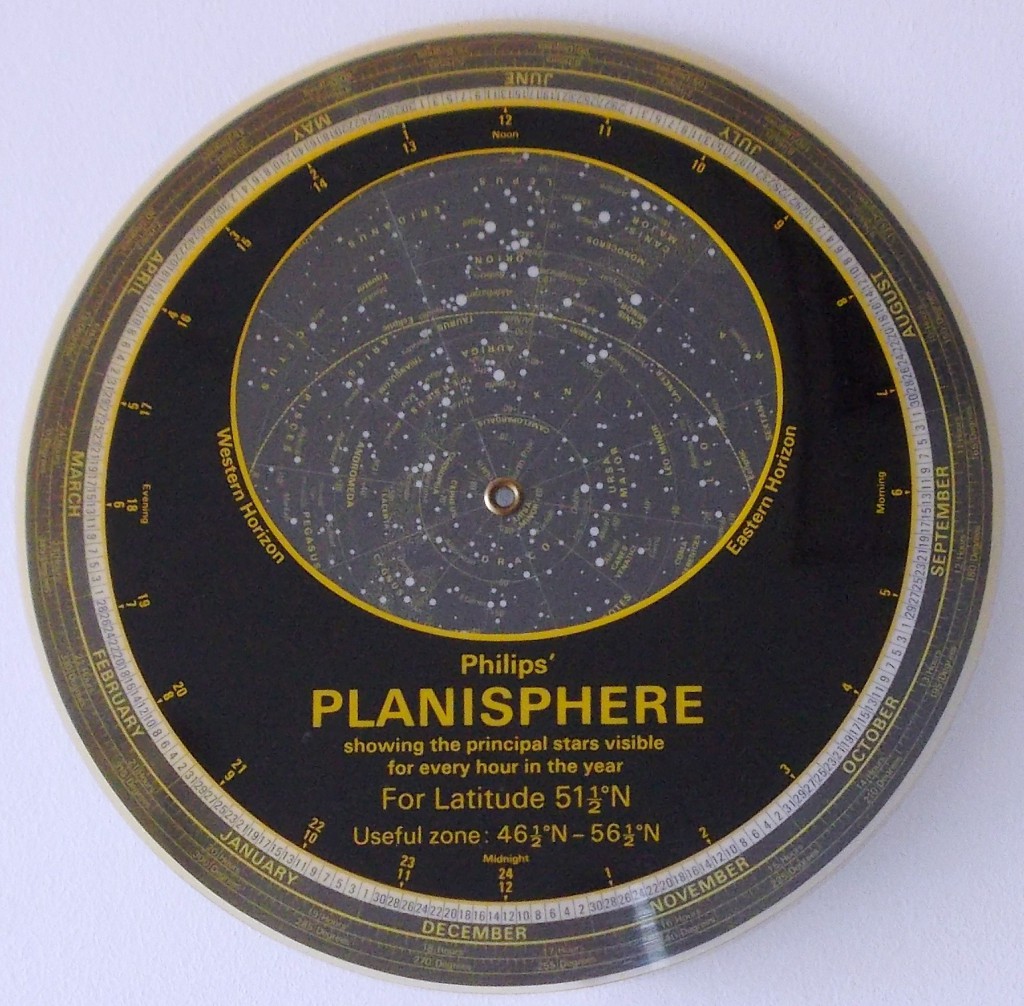
This is the planisphere Peter uses, it looks very different to the Museum’s one at the bottom of the post! The big dipper can be seen to the right of the pole star.
Name: Peter
Age: Ancient
From: Oxford
Object: Planisphere
Story: My modern planisphere is shown in the photo above. The brass rivet at its centre marks the position of the pole star. Because the Earth rotates daily, all stars seem to revolve about the pole star. By setting the date and time a planisphere shows which stars are visible in the night sky.
I like it because it can also be used in reverse, like a nocturnal, to tell the time at night:
- Face north (in the direction of the pole star).
- Hold the planisphere vertically in front of you with the oval sky-opening towards the top.
- Keeping the front disk of the planisphere fixed, rotate the star disk until the orientation of the big dipper (plough) on the star disk matches that of the big dipper in the sky.
- The time can now be read out against today’s date at the edge of the planisphere. [During the British Summer Time you will have to add an hour.]

Celestial Planisphere, London, Early 19th Century (Inv. 40743). This planisphere from the Museum’s collections is about 200 years old!
